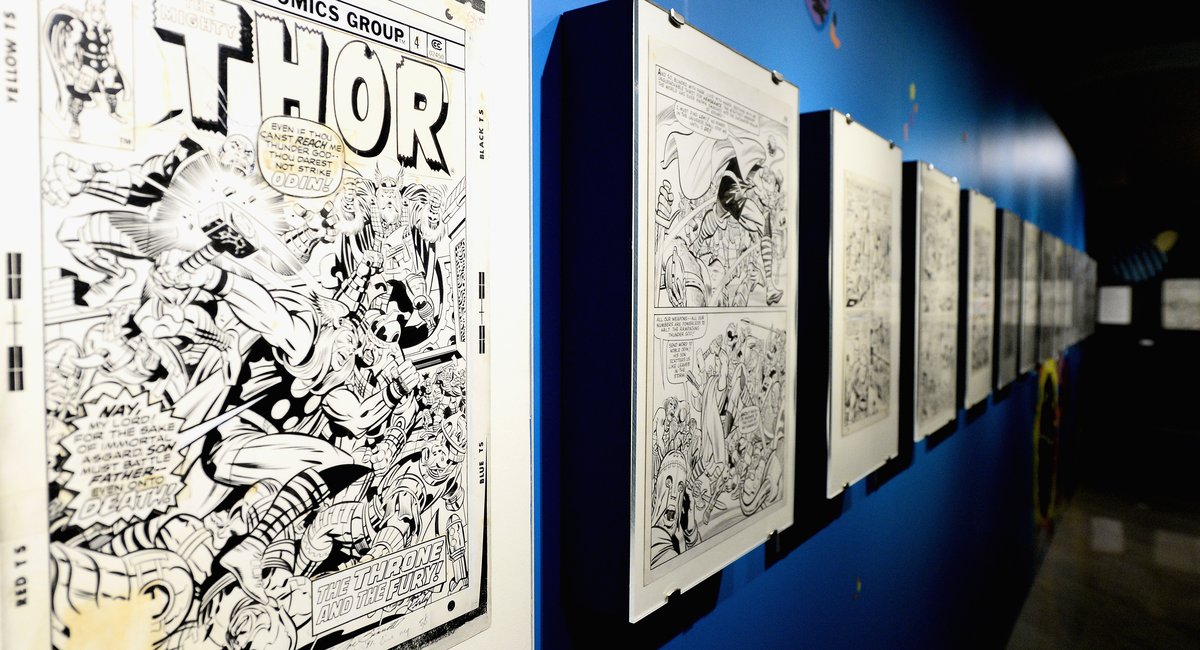New York Comic Con has come and gone, but there is another comic book storyline brewing in our own backyard: The push to co-name a street on the Lower East Side for Jack Kirby.
He’s the co-creator of some of Marvel Comics’ most popular characters, and he was born on the Lower East Side. Despite being one of the most influential comic book artists ever it’s often said that Kirby didn’t always get the credit he deserved in his lifetime.
Pop culture historian and critic Roy Schwartz, one of the people pushing to rename part of the Lower East Side’s Essex Street after Kirby, recently discussed the artist and his legacy with “All Things Considered” host Sean Carlson.
This is a lightly edited transcript of their conversation.
Carlson: Roy, for those who aren’t familiar, who is Jack Kirby?
Schwartz: Jack Kirby, born Jacob Kurtzberg, was born in 1917 at 147 Essex St., the tenement building that still stands on the Lower East Side. The son of immigrants, the son of refugees, he grew up in poverty, had to drop out of school to help support the family. But he had an uncanny artistic talent. So he found a job in the brand-new medium then of comic books and he went on to co-create Captain America and Ironman and the Avengers and the X-Men and Black Panther and the Fantastic Four, et cetera, et cetera. Name a superhero, and he was involved in its creation, one way or another. And he was denied recognition during his lifetime, certainly compared to creative partner Stan Lee, who happened to also be the editor in chief and the owner’s cousin. He did not own his characters any more than you or I do.
Talk more about the significance of the location you would co-name – Essex Street between Stanton and Irvington.
One, it’s the block Jack Kirby was born, raised and grew up in; second, the Lower East Side in general, and that street in particular, have been featured consistently in his work throughout his seven-plus-decade career. It’s where the Fantastic Four’s “Thing” comes from, which was really Jack Kirby’s avatar in fiction. The Thing’s name is Benjamin Jacob, named after Jack’s father and Jack; he looks like a cartoon exaggeration of Jack Kirby and has the same mannerisms, same patterns of speech, and he also comes from the Lower East Side, from Yancy Street, which is a fictionalized version of Delancey Street.
The Lower East Side is also Captain America’s famous origin. If you’ve seen the movie, if you’ve read the comics, he comes from the Lower East Side, not from the Heartland, not from a Mayflower family, but from the ethnic ghetto of the Lower East Side. Captain America grew up impoverished. He was a bullied, small artistic youth. That is Jack Kirby’s Life. It’s directly based on his own childhood. There’s an entire neighborhood in Superman’s Metropolis based on Jack Kirby’s childhood Lower East Side. Even the comic book cliche of superheroes fighting on rooftops comes from Jack Kirby as a member of a youth gang due to depression, having fights across the huddled tenement rooftops of the Lower East Side.
So he really did immortalize that neighborhood in the early to mid-20th century in his comics, and now that’s a famous locale in the comics and video games and cartoons in the movies.
The Lower East Side community board voted in favor of the co-naming, but there is a long road ahead. Can you talk about that?
I have been very, very lucky to have the support of people, and one is Karen Green, the curator for comics and cartoon arts at Columbia University Libraries, who really gave me the idea to do this. She said “somebody ought to do this,” and I said, “I will be that somebody.” So we’re part of the same team. We’re the Avengers. Surprisingly, there’s been no pushback. Quite the opposite, there’s been enthusiastic support. We encountered people who we never thought would know who Jack Kirby was or would care, and their faces just lit up. Everybody returned back to their 10-year-old selves and filled with excitement. They lit up like a Christmas tree. The next step is a wider community board meeting followed by the district councilmembers’ approval, followed by the City Council’s approval, followed by the mayor’s signature. So the road ahead of us is still long.
If this effort is successful, what do you hope people take away from seeing Jack Kirby’s name on a street sign? And what part of Kirby’s legacy do you feel is the most important for the public to recognize, especially for people who say, don’t care about comics?
You don’t need to care about comics to realize we live in culture. It’s a construct we all live in. Jack Kirby is a founding father of modern popular culture and of a beloved American mythology. His groundbreaking artistic innovation and his moralistic storytelling have brought joy and inspiration to generations of New Yorkers, of Americans, of people around the world.
That’s something worth recognizing and celebrating even if you could not care less about the medium of comics, although you should because they’re awesome.
Jack Kirby helped birth pop art as we know it, and he has also been credited as a direct inspiration by countless creatives.

